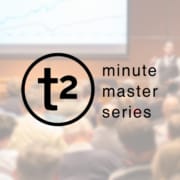Daily Minute Master Series – October 9, 2019
Social Media
Instagram Updates its Stories Camera with New ‘Create’ Mode to Highlight Creative options
Instagram’s now rolling out a new format for its Stories Camera, which will make the app’s various Stories tools – including GIFs, Countdown Stickers and Polls – easier to access and apply, direct from the main function bar. The biggest change is the addition of a new ‘Create’ mode, which replaces the existing ‘Type’ option. In ‘Create’, you’ll be able to find all the various creative tools available, as opposed to having to add them through Stickers or other forms. By making these options easier to locate, and grouping them together in this way, it could encourage more use, while it may also enable Instagram to better highlight the app’s most popular creative features. Feature-wise, this format update doesn’t add anything new, but it does, as noted, make it a little easier to get a better idea of how your Story frame is going to look, and it makes the various creative tools easier to locate.
For the full article click here
Pinterest Launches ‘Pinterest Academy’ Education Resource for Marketers
Pinterest has this week launched a new set of platform education course for marketers, under the umbrella of the ‘Pinterest Academy’. The new Pinterest Academy offers a range of education courses, and links to various other tools and reference studies, in order to help you get a better handle on how to utilize Pins for your business. At launch, Pinterest is offering five courses, with four more coming later this month. These cover the essential elements of building your brand presence, and utilizing Pinterest for marketing and selling. And while some of the courses do feel quite entry-level, Pinterest does need to cater to all kinds of users, and regardless, there are valuable tips in each one, even if you do have to go over a few things you already know.
For the full article click here
Marketing
Google to address ad frequency with machine learning when cookies aren’t available
Google will be rolling out an approach to ad frequency control that doesn’t rely on cookies in Display & Video 360 over the coming weeks. The feature uses machine learning to analyze traffic patterns when third-party cookies are available and builds models to predict patterns when a cookie isn’t present. “This allows us to estimate how likely it is for users to visit different publishers who are serving the same ads through Google Ad Manager. Then, when there is no third-party cookie present, we’re able to optimize how often those ads should be shown to users,” said Rahul Srinivasan, product manager for ads privacy at Google, in the announcement. Google is increasingly relying on models to inform how ads are delivered when it doesn’t have access to data it could once count on. Google is in an enviable position, however: the massive volume of data it’s still able to collect combined with significant investments in machine learning means it can make do with less.
For the full article click here
Influencer Marketing
How To Evaluate Influencer Marketing Platforms That Use AI Technology
What actually constitutes artificial intelligence in influencer marketing? As providers rapidly innovate their solutions, marketers should become familiar with the intricacies (and buzzwords) of influencer marketing tech. In influencer marketing technology, a single process like influencer identification may combine simple statistics (such as engagement metrics), machine learning applications (to identify whether the profile is a person or a company page based on image recognition, for example) and some AI algorithms (to decide whether or not that profile is influential based on posting style, performance history and the sentiments expressed in followers’ comments). To get the most from recommendation technology, you can ask how a provider’s platform determines influence on a general basis, how it “grades” them (sorts them within the platform) and, finally, how it adapts the results based on your selections (not just your search history). The size of the database will also have an impact on the quality of the data — ultimately, the ability to scale larger sets provides richer results. AI has many possible applications within influencer marketing. Some exciting opportunities include the ability to suggest prices and even the content to post. AI also comes with its own set of challenges, however. To create an intelligent program, you need to first annotate the data. As influencer marketing is still largely a negotiation economy, it can be complicated to supervise the machine learning — teaching a machine to identify a human face versus a dog face is much easier than teaching it how to appropriately price an influencer. This underlines the complexity of a creative economy rooted in the web. There will always be an overlap that requires both artificial and natural intelligence.
For the full article click here





